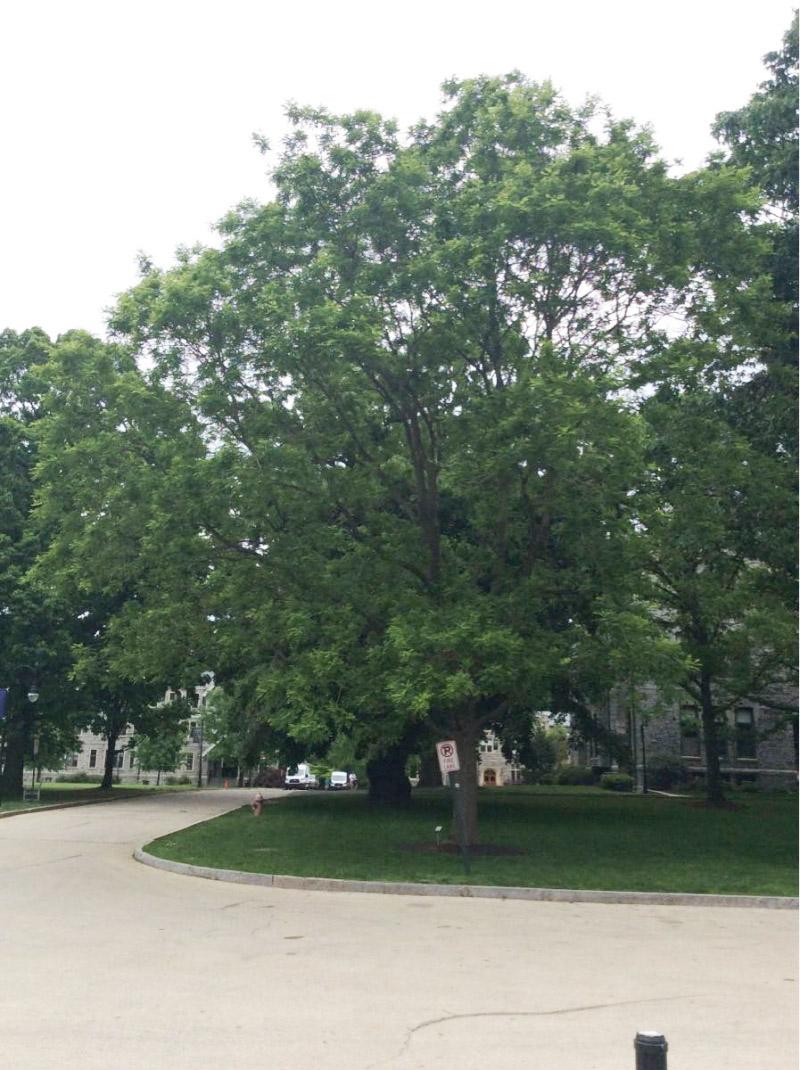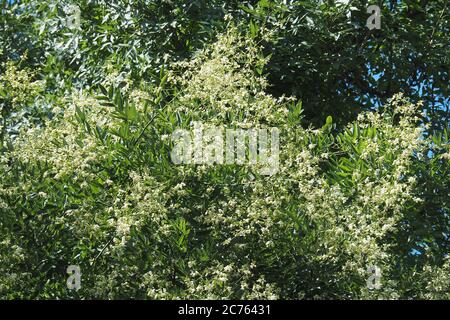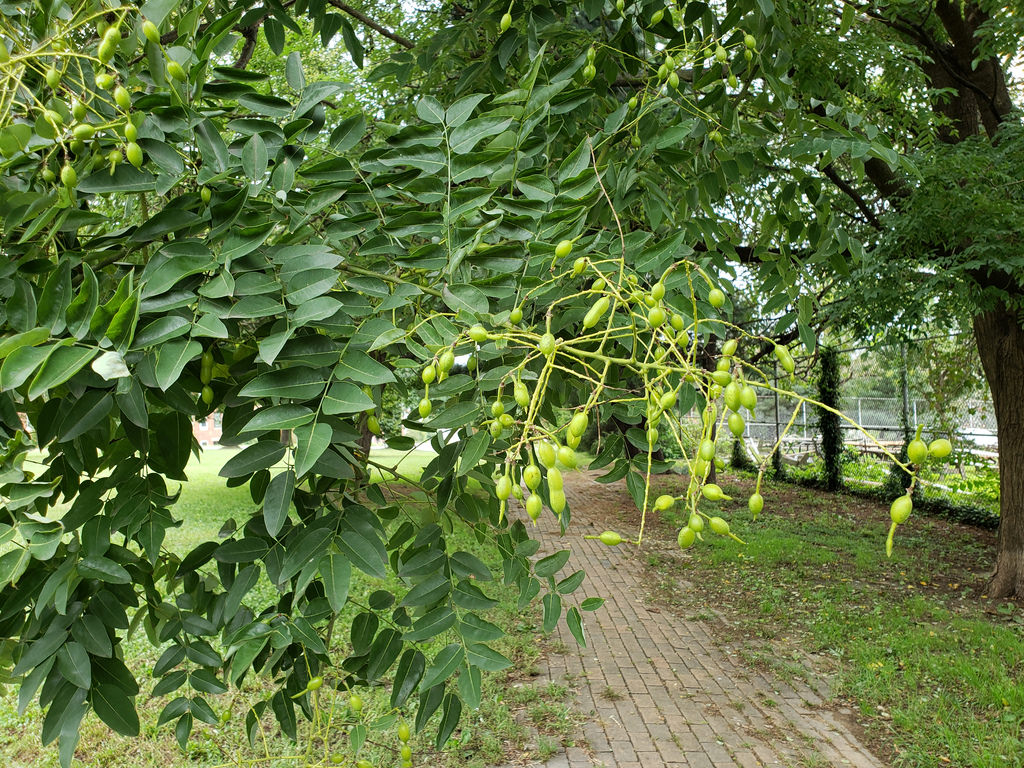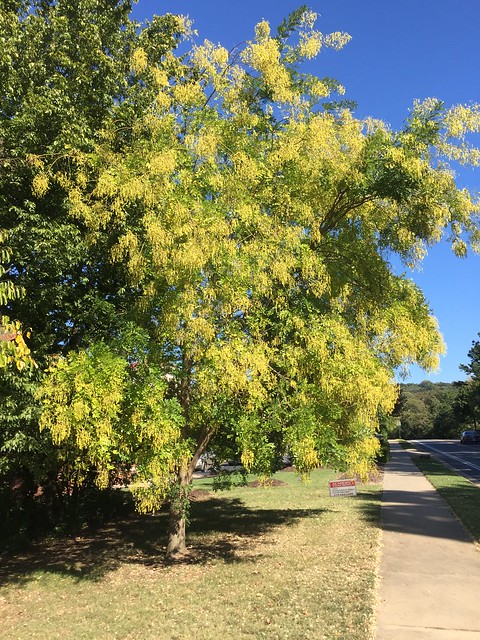japanese pagoda tree invasive
Japanese Pagoda Tree Wild Sassafras Orn. No special winter interest Outstanding tree.

Japanese Pagoda Tree News From Rockcliff Farm
Surface roots are usually not a problem Winter interest.

. See reviews photos directions phone numbers and more for Japanese Maple Trees locations in Piscataway NJ. Tree has outstanding ornamental features and could be planted more Invasive potential. Weeping scholar tree weeping Japanese pagoda tree.
Japanese Pagoda Heritage Tree. For over two centuries this tree was given the name Sophora japonica but the four species were removed from that genus because they lacked the ability to fix nitrogen as do other species of Sophora. Mid-Atlantic Exotic Plant Management Team Invasive Plant List.
The Pagoda tree is capable of growing in all soil types although it grows best in well drained loamy soils and in full sun conditions. While pagoda plants are most commonly planted directly in the ground you can choose to plant them in a pot. The Japanese pagoda tree is often grown as a shade tree in lawns or on patios however flowers and seedpods often leave stains on pavement.
Sapindus drummondii Western Soapberry An attractive small native tree with glossy compound leaves and excellent deep yellow-gold fall color. Sophora japonica-- Scholar Tree Page 3 Other Figure 3. Maple Tree Farms Produce.
Yes Susceptibility to Pests and Diseases. It is generally cultivated for its attractive compound foliage and fragrant. Potential seedlings to be planted are swamp white oak sycamore black gum and sweet gum at a rate of 500 trees per acre.
It is a medium to large deciduous tree that typically matures to 50-75 less frequently to 100 tall with a broad rounded crown. If you do pot the pagoda plant keep in mind its need for fertile well-draining soil. 2 A recommended goal is to plant.
National Park Service National Capital Region Exotic Plant Management Team Invasive Plant List. Japanese pagoda tree Styphnolobium japonicum L Schott. A 10-30-10 is an excellent mix for flowering trees.
East Experiment Station East side. It is hardy to -25F 317C. In the United States the tree is by and large considered non-invasive.
Some listed trees are considered to be invasive species and should only be planted in locations where they are not likely to spread into native woodlands. Styphnolobium japonicum commonly called Japanese pagoda tree or Chinese scholar tree is native to China and Korea but not Japan. Little needed to develop a strong structure.
The domestication of. This map identifies those states that list this species on their invasive species list or law. Remember that no blooms will be created for at least 10 years so giving the tree fertilizer in those first 10 years is wasting nutrients.
New Invaders of the Southeast. One advantage to potting a pagoda plant is the ability to control the reproduction of this plant through rhizomes. Once the ash trees are removed areas with invasive species and other competing vegetation such as Japanese stitlgrass and Japanese barberry will be spot-treated using herbicide applied by a licensed applicator.
Little if any potential at this time Ozone sensitivity. A clusters of creamy white-green fragrant flowers appear in summer. Native geographic location and habitat.
Can be somewhat difficult to train into a central leader. See it on the map. Grows best in moist fertile well-drained soil.
Japanese Pagoda Japanese pagoda is a large deciduous tree native to China It is an upright forming a lacy canopy of dark green pinnate leaves. Mid-Atlantic Coastal Plain regions. Palmatum plantanoides pseudoplatanus Japanese Norway Sycamore maple Invasive Actinidia arguta Hardy kiwi Threat Aegopodium podagraria Goutweed Invasive Agrostis capillaris Colonial bent-grass Invasive Ailanthus altissima Tree of Heaven Invasive Akebia quinata Five-leaved akebia Invasive Albizia julibrissin Mimosa Invasive.
Foliage of Scholar Tree. Attracts birds pollinators or wildlife. Trees do best in areas with full sun or partial shade and moderate amounts of water.
It is native to the northern portion of the eastern United States. Flowers are showy creamy-white on upright panicles up to. Good tree for city conditions plant Princeton Upright or Regent varieties.
Japanese pagoda tree Styphnolobium japonicum Snowbell Styrax japonicus Styrax obassia Tree lilac Syringa reticulata Baldcypress Taxodium distichum Yew. Robert Vidéki Doronicum Kft. It is resistant to pests drought and pollution.
When your Japanese pagoda begins to blooms you will want to use a fertilizer with an NPK formulation with high phosphorous as your fertilizer of choice. Styphnolobium japonicum L Schott previously. Medium to fast grower Compound medium green leaf creamy white bell shaped flower mid-summer bright green fruit pod.
Japanese pagoda tree Styphnolobium japonicum is a Terrestrial species. Sophora japonica Where to Look. As the official tree of Beijing China it demonstrates the common theme of aesthetic beauty shared between East and West.
Atlantic and Gulf Coastal Plain AGCP. Robert Vidéki Doronicum Kft. Potting and Repotting.
The Japanese pagoda tree is included in some significant Chinese legends and serves as a cultural and historical reference. Pagoda dogwood is a native low-branched tree reaching a mature height of 15 to 25 feet and 20 to 32 feet in width. Its unique horizontal branching pattern has a distinct tiered habit.
Landscape Designers Consultants Nurseries-Plants Trees.

Japanese Pagoda Tree Styphnolobium Japonicum Fabales Fabaceae 5539402
A Japanese Pagoda Tree Sophora Japonica L Planted In A Roadside Download Scientific Diagram

Japanese Pagoda Tree Styphnolobium Japonicum Bryn Mawr College

Japanese Pagoda Tree News From Rockcliff Farm
Japanese Pagoda Tree Becoming Popular In U S Cities What Grows There Hugh Conlon Horticulturalist Professor Lecturer And Gardener
Enh 750 St592 Sophora Japonica Scholar Tree

Japanese Pagoda Tree News From Rockcliff Farm

Japanese Pagoda Tree Japanischer Schnurbaum Styphnolobium Japonicum Sophora Japonica Kozonseges Pagodafa Japanakac Hungary Magyarorszag Europe Stock Photo Alamy

Sophora Japonica Pendula Fast Growing Shade Trees Shade Trees Garden Trees

Fast Growing Trees For Impatient Gardeners Finegardening
Japanese Pagoda Tree Becoming Popular In U S Cities What Grows There Hugh Conlon Horticulturalist Professor Lecturer And Gardener

Japanese Pagoda Tree Styphnolobium Japonicum Fabales Fabaceae 5396099

Japanese Pagoda Tree News From Rockcliff Farm

Japanese Pagoda Tree News From Rockcliff Farm

Styphnolobium Japonicum Landscape Plants Oregon State University

Maryland Biodiversity Project Japanese Pagoda Tree Styphnolobium Japonicum

Japanese Pagoda Tree Chinese Scholar Tree

Japanese Pagoda Tree Plant Care Growing Basics Water Light Soil Propagation Etc Plantin

Japanese Pagoda Tree Styphnolobium Japonicum Fabales Fabaceae 5539401